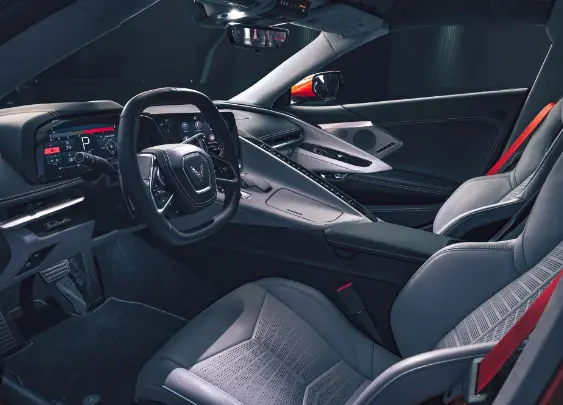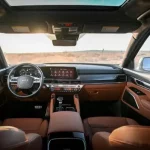The color of a car’s interior might seem like a matter of personal preference, but it goes far beyond aesthetics. The choice of interior color can have a significant impact on the overall driving experience.
In this article, we’ll delve into the psychology of color in car interiors, exploring how different hues can influence emotions, comfort, and even safety.
1. Black: Elegance and Sophistication
Black is a timeless choice for car interiors, often associated with elegance and sophistication. It exudes a sense of luxury and power. Drivers who prefer black interiors may be drawn to a sense of control and authority, as black can create a commanding presence.
**2. Gray: Balance and Neutrality**
Gray interiors offer a sense of balance and neutrality. They are versatile and blend well with various exterior colors. People who choose gray interiors may value practicality and adaptability. Gray creates a calm and composed environment, appealing to those who seek a sense of serenity on the road.
**3. Beige/Tan: Comfort and Relaxation**
Beige or tan interiors evoke feelings of comfort and relaxation. These warm, earthy tones create a welcoming atmosphere, making passengers feel at ease. Drivers who prefer beige interiors may prioritize a cozy and inviting driving experience.
**4. White: Cleanliness and Purity**
White interiors are associated with cleanliness and purity. They give the impression of a well-maintained and hygienic environment. Drivers who opt for white interiors may have a desire for cleanliness and minimalism in their cars. White interiors can also provide a sense of spaciousness.
**5. Blue: Calmness and Serenity**
Blue interiors are often chosen for the sense of calmness and serenity they convey. Blue is known for its soothing qualities and is associated with relaxation. Drivers who select blue interiors may value a tranquil and stress-free driving experience.
**6. Red: Passion and Energy**
Red interiors are bold and vibrant, exuding passion and energy. They capture attention and evoke a sense of excitement. Drivers who choose red interiors may have a dynamic and adventurous personality, seeking a lively and exhilarating drive.
**7. Brown: Warmth and Comfort**
Brown interiors radiate warmth and comfort. They create a cozy and inviting atmosphere, making passengers feel at home. Drivers who prefer brown interiors may prioritize a sense of familiarity and relaxation during their journeys.
**8. Green: Harmony with Nature**
Green interiors are associated with harmony and a connection to nature. They can create a sense of balance and tranquility inside the car. Drivers who opt for green interiors may have an affinity for the outdoors and a desire to bring nature into their driving experience.
**9. Purple: Creativity and Individuality**
Purple interiors are often chosen by those with a flair for creativity and individuality. Purple is a unique and unconventional choice, reflecting a desire for self-expression. Drivers who select purple interiors may value a distinctive and imaginative driving environment.
**10. Multicolor: Versatility and Personalization**
Some car owners prefer multicolor interiors, which offer versatility and personalization. Multicolor interiors can combine different hues to create a unique and expressive space. Drivers who choose multicolor interiors may have diverse tastes and a desire to make their car truly one-of-a-kind.
Conclusion:
The psychology of color in car interiors reveals that our choice of interior hues is not arbitrary; it reflects our personalities, emotions, and desires. Whether you prioritize elegance, comfort, energy, or creativity, the color of your car’s interior can profoundly influence your driving experience. Understanding the psychology of color can help you make a more informed choice when selecting the interior color of your next vehicle, ensuring that it aligns with your preferences and enhances your overall comfort and satisfaction on the road.


